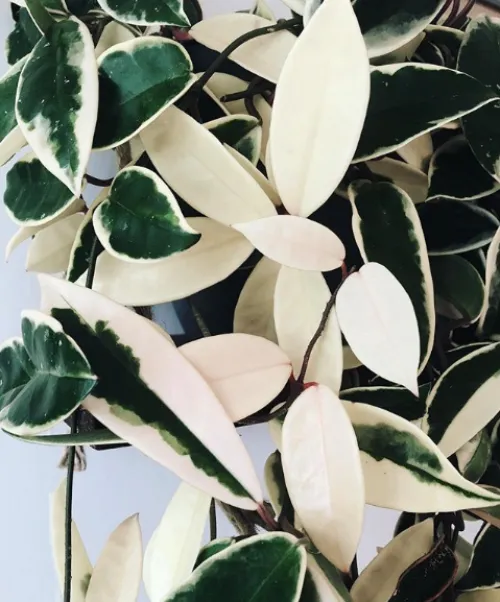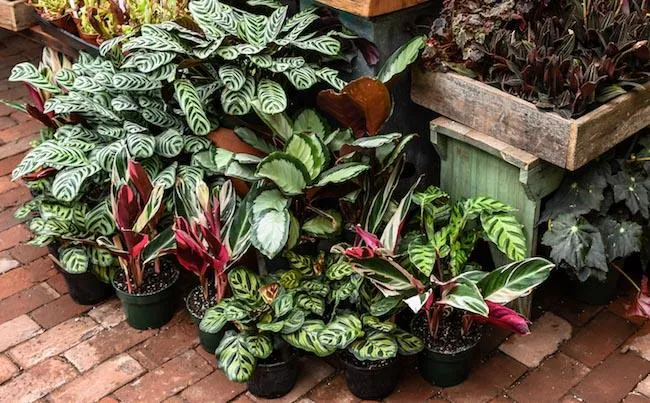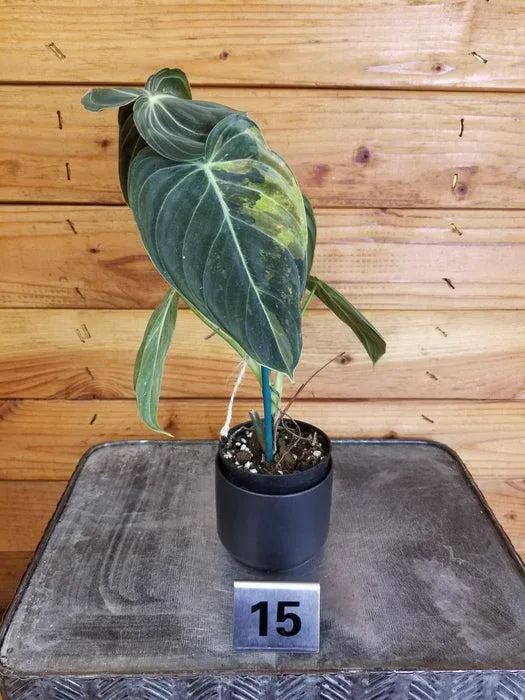Everything You Need to Know About Houseplants With Variegated Leaves
Variegated houseplants can add a beautiful splash of color and visual interest to your indoor spaces. Their leaves often feature striking patterns of light and dark green, white, cream or yellow. If you’re searching for “houseplant with variegated leaves,” you’ve come to the right place. This comprehensive guide will help you choose the perfect variegated plant to suit your home and care needs.
What Makes a Plant Variegated?
A variegated plant differs from others of its kind due to an irregular distribution of chlorophyll in its leaves. Chlorophyll is the pigment that gives leaves their typical green color. In variegated plants, some sections of leaf tissue lack or have reduced levels of chlorophyll, appearing in shades of white, cream or yellow instead.
This unique color patterning is caused by a genetic mutation. It shows up naturally in some plant species but can also be induced by horticultural propagation techniques like tissue culture. The lack of full chlorophyll means variegated leaves cannot photosynthesize as efficiently as solid green leaves. For this reason, variegated plants may grow more slowly.
Popular Variegated Houseplant Choices
- Chinese Evergreens: Available in varieties like Aglaonema pictum tricolor with wavy cream and green stripes. Very hardy and easy to care for.
- Dieffenbachia: aka Dumb Cane. Leaves frequently splashed or marbled with cream or yellow. Toxic to pets so keep out of reach.
- Lipstick Plant: Stunning deep red stems contrast dramatically with creamy white edged leaves. Fairly resistant once established.
- peace Lily: Features broad, glossy leaves with creamy white stripes or blotches. Very forgiving plant.
- Pothos: Evergreen vine available in colorful patterns like Marble Queen with cream variegation. Almost impossible to kill.
Choosing the Right Spot in Your Home
From my experience, variegated houseplants thrive best in bright, indirect light. Direct sun can scorch their pale leaves. I find east or west-facing windows perfect. Most varieties also prefer average indoor temperatures around 70–80°F. Check care tags for any unique preferences of different types.
Humidity levels are important too. Some variegated plants like Tradescantia or Peacock Plant may struggle in very dry indoor air without periodic misting. Consider grouping plants on pebble trays to boost ambient moisture.

Tips for Stress-Free Care
While variegated plants can add visual interest, their lack of full chlorophyll means they require some extra TLC:
- Water when the top 1-2 inches of soil are dry to avoid root rot from overwatering pale leaves.
- Rotate plants occasionally to expose all sides evenly to the available light.
- Prune off any non-variegated reversions that sprout solid green leaves stealing nutrients from the plant.
- Fertilize every 4-6 weeks during growing season with a diluted, balanced houseplant formula.
- Be vigilant for pests which can more easily damage variegated plants. Isolate any infested specimens quickly.
Dealing With Their Downsides
Variegated plants have reduced chlorophyll, so keeping them happy takes some work. Here are a few issues you may face and how to address them:
Slower Growth
Be patient! Variegated plants frequently take longer to fill out. Cut back on direct sun and switching to dilute fertilizer every other watering can help boost their growth rate.
Leaf Drop
Individual pale leaves may yellow and drop periodically if conditions aren’t ideal. This stresses the plant less than total leaf loss, so don’t panic. Double check care adaptations.
Reversion to Solid Green
Occasionally a branch or new growth may “revert” and grow out solid green. Remove promptly so it doesn’t outcompete the variegated sections. Some species are prone while others remain stable.

Greater Pest/Disease Risk
Variegated foliage can attract pests looking for weaker plants. Check leaves regularly and isolate/treat any issues ASAP before they spread. Preventative sprays may help during growing seasons.
Higher Cost
Rarer variegated cultivars will usually have a higher price tag versus their solid green counterparts. But their artistic foliage makes them worth the investment for many plant parents!
In conclusion, variegated houseplants can offer unique beauty and interest to any indoor space. With the right care adjustments for their specific light, water and fertilizer needs, you can enjoy these artists of the plant world for years to come. Happy plant parenting!
Variegated Houseplants: Choosing and Caring for Leaf Varieties
| Plant | Light Needs | Watering | Care Tips |
|---|---|---|---|
| Chinese Evergreen | Medium to bright indirect light | Water when top inch of soil is dry | Keep soil moist, prune to shape |
| Pothos | Low to medium light | Water when top inch of soil is dry | Tolerates neglect, trail or climb |
| Peperomia | Medium to bright indirect light | Water when top inch of soil is almost dry | Tolerates low light, prune to shape |
| Philodendron | Low to medium light | Water when top inch of soil is dry | Tolerates low light, climbs or trails |
| Zebra Plant | Medium to bright light | Water when top inch of soil is dry | Showy foliage, avoid direct sun |
FAQ
-
What are variegated leaves?
Variegated leaves are leaves that have splotches of different colors other than plain green. Kinda like the plant has different shades and hues going on with its foliage. Basically the cells inside the leaves produce less chlorophyll in certain areas, making sections of the leaf white, yellow or pink instead of just green.
-
Why do some houseplants have variegated leaves?
Plants make variegated leaves for a few reasons. Sometimes it’s caused by a virus or genetic mutation. But the plant doesn’t “dislike” the variegation – it’s not harmful. In fact, variegated leaves may provide some protection from too much sun, acting like natural sunscreen! At the same time, the splashes of contrasting colors make for stunning visual appeal that attracts plant parents to their variegated beauties. It’s remarkable how nature can variate a leaf’s looks without affecting its functionality.

-
Are variegated plants harder to care for?
Generally variegated plants have similar care needs to their solid green counterparts. However, the sections of variegated leaves that produce less chlorophyll may be somewhat more vulnerable to sun or environmental stress. You kind of have to be a little more careful not to scorch the white or yellow bits. But otherwise with the same watering, lighting, etc a variegated plant can thrive. I guess you just gotta treat it a little more delicately, like a work of art! Then the spectacular colors will continue to dazzle.
-
Do variegated plants revert back to solid green?
Occasionally a variegated plant may randomly just decide to go back to being plain ol’ green. This “reversion” can happen for a number of reasons, like stresses like too much sun mentioned before. Or sometimes it’s simply natural genetic variation at play. When a cutting is propagated, there’s always a possibility some new growth will lack the colorful patterns. At any rate, there’s no way to control or reverse reversion once it occurs. But on the other hand, new variegated growth usually comes back eventually in other parts of the plant. So don’t give up hope!
-
Are variegated plants more expensive?
You better believe variegated plants will usually cost more green than their solid versions. After all, the rare and beautiful coloring is what makes them so coveted! The plant stores know people are willing to pay top dollar for an unusual accent plant. So if a variegated monstera or pothos catches your eye, be prepared for a price that reflects their uncommon good looks. But hey, isn’t beauty worth it? A splash of variegation can seriously upgrade a space. So maybe it’s worth digging a little deeper in the piggy bank!
-
Do variegated leaves need more or less light?
This one’s a bit debatable! While sections with less chlorophyll could potentially scorch more easily in intense light, those same areas also tend to photosynthesize not as efficiently. Some plant parents find their variegated plants grow best with slightly shadier conditions. Others insist the plants need extra sun to compensate. I guess it may depend on the specific cultivar. Experimenting what lighting suits the individual plant seems like the best approach. But would brighter indirect light be a fair compromise? Are we overthinking this?!
Will variegation show up in seed-grown plants?
If a variegated plant is grown from seed, any offspring have only a small chance of exhibiting the same spectacular patterns. Most seedlings will revert back to the species’ default green coloration due to genes recombining randomly. Really striking forms are typically propagated by cuttings to keep those coveted color traits around. So unless you get really lucky, buying a proven variegated plant is the surest bet to get those awesome leaves! Does that make sense? Let me know if any other plant questions come to mind.

